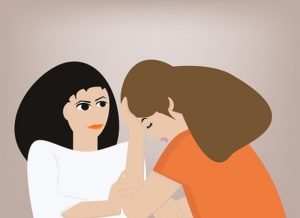What is hyperventilation?

What is hyperventilation? In short, it is an exaggerated breathing (hyper = exaggerated, ventilation = breathing). You then breathe more than is actually necessary for the body. There are two types: acute hyperventilation and chronic hyperventilation. In the acute variant, a clearly perceptible accelerated and deep breathing is visible. This is often less clear with the chronic variant. One breathes too much, but in a very subtle way. The respiratory frequency is just too high.
Acute hyperventilation
This variant is a mechanism that is built into the body. It prepares the body for action in an exciting and potentially life-threatening situation. The respiratory center in the brain – which controls the respiratory rate of our body – is triggered to significantly increase the respiratory rate. As a result, the blood is saturated with oxygen. This means the muscles can perform to a much greater effort. It is the so-called flight-or-fight response of our body. So it is a normal reaction of the body and certainly not a disease.
Chronic hyperventilation
The variant is – in contrast to the acute variant which is a body function – a disorder. In chronic hyperventilation the breathing frequency – triggered by the respiratory center – is too high. The patient breathes too fast, without an exciting or threatening situation to trigger this. For a detailed explanation, see the article about the respiratory center.
Hyperventilation causes many symptoms

by hyperventilation
Due to the increased respiratory rate, a range of symptoms develop. These symptoms often occur in certain situations. As a result, they cause phobic symptoms. Some patients get the symptoms at night and are woken because of it. Others get it when they sit quietly in front of the TV after a period of action. The majority of people experience the symptoms in a busy shop full of people. Or in line for a cash register or in the supermarket. But also in full trams or buses, lifts and tunnels. Or in the hustle and bustle of cinemas and theaters.
